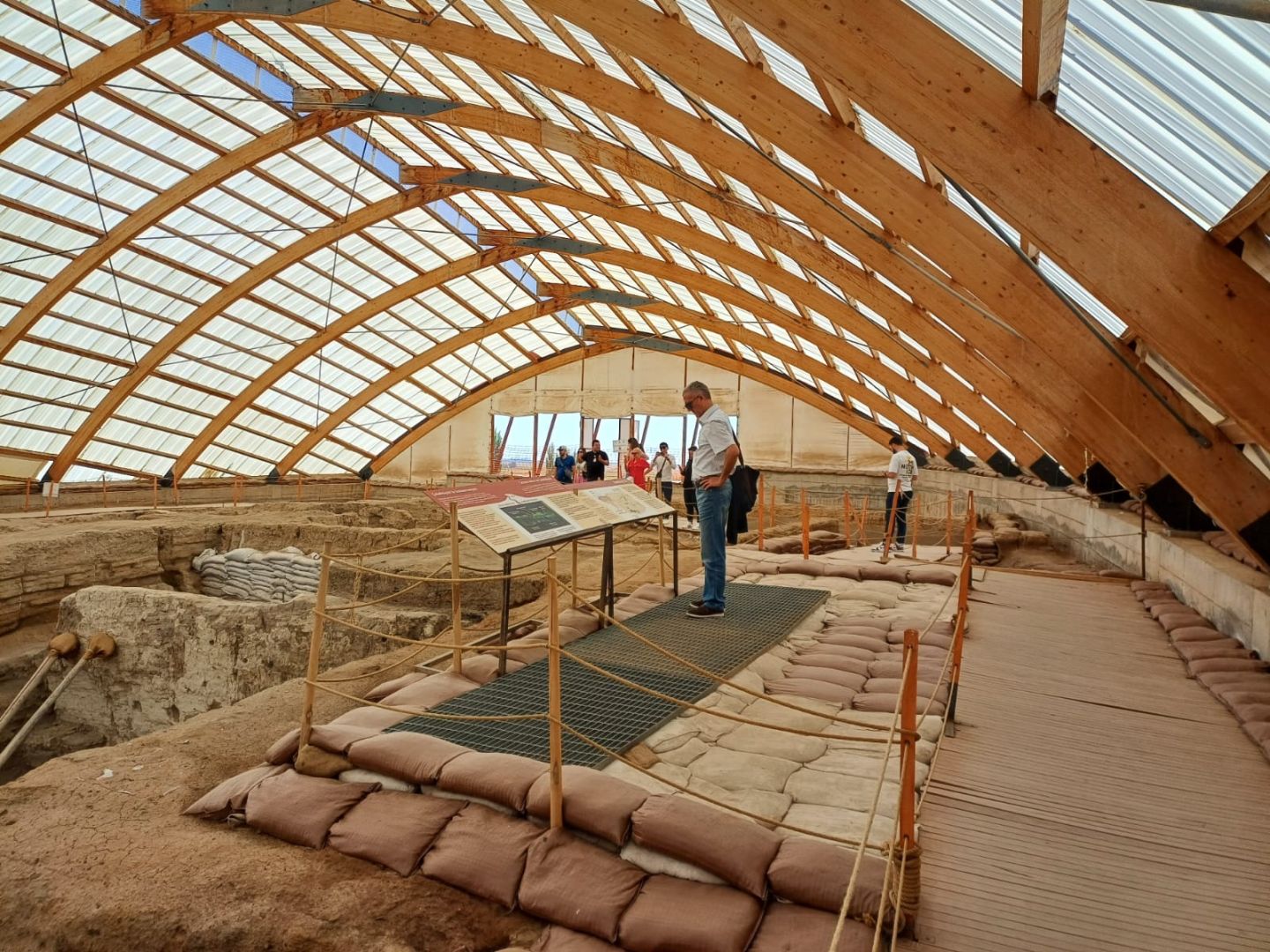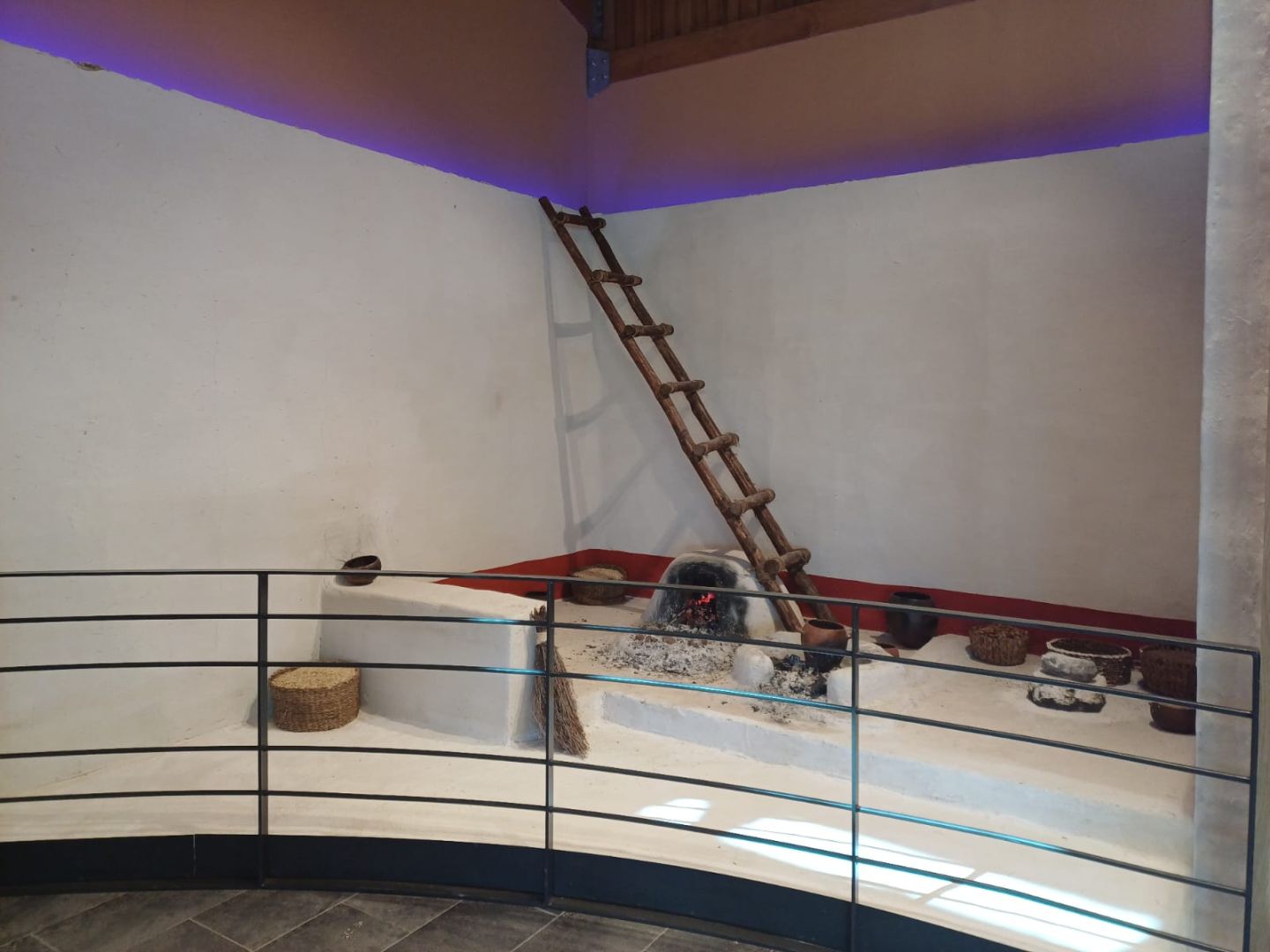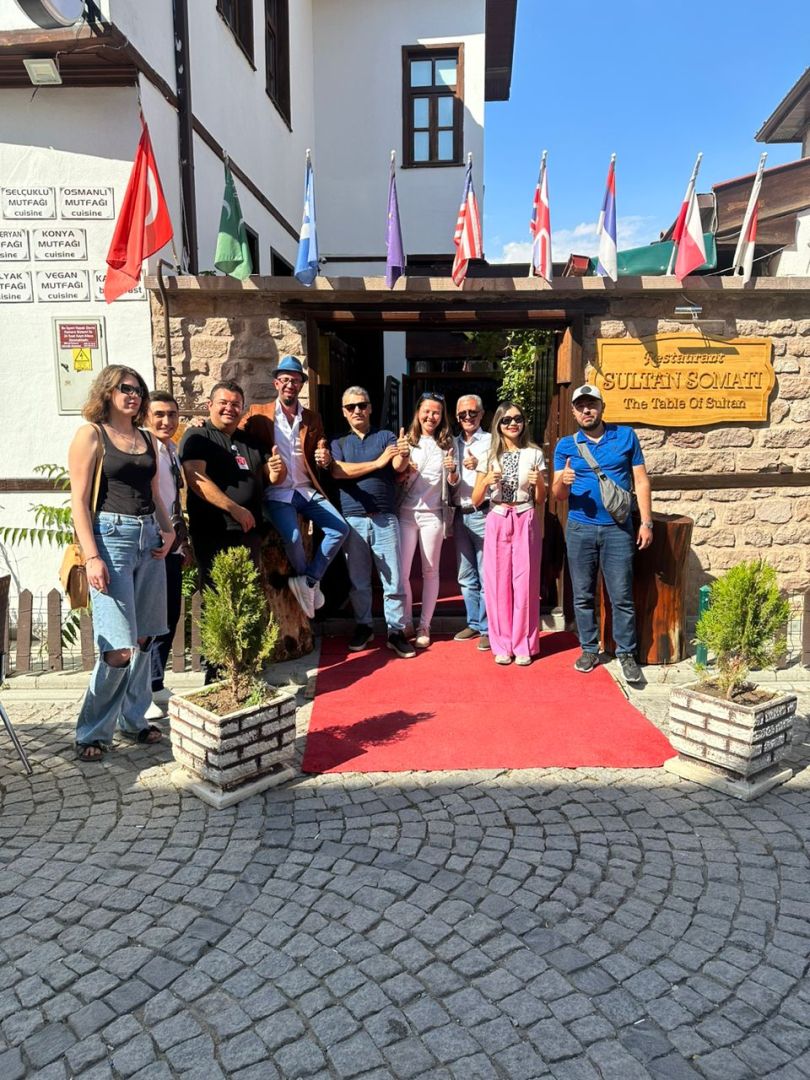|
|
TODAY.AZ / Weird / Interesting
Çatalhöyük – Konya’s unearthed 11 millennia-history
28 September 2023 [02:23] - TODAY.AZ

By Azernews
Elnur Enveroglu
We are in Konya - the city that hides the secrets of history under its fertile soil. Our journey continues...
This city, distinguished by its antiquity and preserving all cultures as a treasure, is not limited to the Seljuk history.
Called Kawana in the Hittite period, the city was also called Kaoania in the Phrygian and Luwian periods. However, on this trip, we visited Çatalhöyük a settlement of Çumra district, which is about 52 km from the center of Konya city.
Çatalhöyük is a very large Neolithic and Chalcolithic Age settlement in Central Anatolia, which was inhabited about the 9th millennium BC. The name Çatalhöyük also stands for two independent words – çatal which is fork and höyük is a living place. It is because the town is shaped like a fork in a bird’s-eye view. It consists of two settlements side by side in the east and west directions. The settlement in the east, called Çatalhöyük (East), was inhabited in the Neolithic Age, and the settlement in the west, called Çatalhöyük (West), was inhabited in the Chalcolithic Age. Both of the towns within Çatalhöyük were discovered by Western archeologists James Mellart, David French, and his colleagues in 1958. It is located in a wheat field overlooking the Konya Plain, approximately 136 kilometers away from Hasanda??, 11 km north of Çumra district.
The place we visited was then renovated and all the conditions for visitors were quite convenient. Built with wood the building took us along a corridor with cells each one of which had presentation boards equipped with some cutting-edge technology. Each board speaks to you upon your request by pushing a button for specific information.


A cozy and compact library gives you another pleasant atmosphere with a number of books taking you to ancient history and delving into the depth of science. Through the backdoor, the route takes you to the mounds where archaeologists discover ancient homes way of life of inhabitants.

This is the symbol of the goddess Cybele (or known as the inscription Matar Kubeleya at a Phrygian rock-cut shrine), the ancient source of belief and the highest deity of the Phrygian people living in ancient Çatalhöyük. According to historical data, the ancient people who lived here in about the sixth century BC worshipped a fat seated female goddess.

Being fat was important for ancient Phrygians at that time, by the way. Until that time, people worshipped wild animals such as calves, leopards, and lions that they could not hunt. But over time, as the human race invented weapons and could hunt wild animals, they then gave up the outdated belief.

In front of us are houses excavated from an ancient mound. At that time, as can be seen, houses were built with walls adjacent to each other. The reason was to protect from attacks of wild animals. The houses did not have doors, people used to enter their houses by climbing a ladder. And mostly children used to be victims of wild animals.


When you look inside the houses, you can clearly see that people buried their dead under the house at that time. However, the corpses were initially kept in a specially designated place until their flesh was eaten by vultures and wild birds. They buried the bones of the dead in their homes. During the trip, our tour guide Mehmet Dönmez once again shared some valuable historical information with AZERNEWS.
On the way back to Konya from Çatalhöyük, we stopped for lunch at an interesting place.

We tasted the delicious dishes of the Sultan Somati restaurant, one of the most mysterious corners of Konya, the city of Sultans and Sufis. Indeed, the service was worthy of sultans, and the table was rich with the light and blessings of Hazrat Maulana. From the design of the restaurant to its cuisine, it was completely authentic. In short, it is useless to say a word without visiting this place and tasting delicious food.


For now, we are in Konya with the organizational support of the Turkish Ministry of Culture, and if you aspire to explore more interesting places, stay with us…
Exclusive by Elnur Enveroglu from Konya…
URL: http://www.today.az/news/interesting/239466.html
 Print version
Print version
Connect with us. Get latest news and updates.
See Also
- 23 January 2025 [23:20]
Dubai once again named cleanest city in the world - 06 December 2024 [22:20]
Are scented candles harmful to health? - 23 November 2024 [14:11]
Magnitude 4.5 earthquake hits Azerbaijan's Lachin - 20 November 2024 [23:30]
Launch vehicle with prototype of Starship made its sixth test flight - 27 October 2024 [09:00]
Fuel prices expected to rise in Sweden - 24 October 2024 [19:14]
Turkiye strikes terror targets in Iraq and Syria - 23 October 2024 [23:46]
Kazakhstan supplied almost entire volume of oil planned for 2024 to Germany in 9 months - 23 October 2024 [22:17]
Taiwan reported passage of Chinese Navy aircraft carrier near island - 23 October 2024 [21:50]
Russia remains largest oil supplier to India - 16 October 2024 [17:54]
Gamesummit co-founder shares insights on future of gaming industry in Azerbaijan [EXCLUSIVE]
Most Popular
 Russia’s potential moves spark debate amid Tartus lease termination
Russia’s potential moves spark debate amid Tartus lease termination
 Macaron prepares for war with the United States
Macaron prepares for war with the United States
 Uzbek FM: Tashkent supports further strengthening of strategic relations with Baku & Ankara
Uzbek FM: Tashkent supports further strengthening of strategic relations with Baku & Ankara
 World Bank unveils 5-year strategy to boost Azerbaijan’s economy and sustainability
World Bank unveils 5-year strategy to boost Azerbaijan’s economy and sustainability
 Hikmet Hajiyev: Investigation into Azal plane crash continues, Azerbaijan in talks with Russia
Hikmet Hajiyev: Investigation into Azal plane crash continues, Azerbaijan in talks with Russia
 Ankara Declaration strengthens trilateral cooperation between Azerbaijan, Türkiye, and Uzbekistan
Ankara Declaration strengthens trilateral cooperation between Azerbaijan, Türkiye, and Uzbekistan
 West try to blackmail Georgian authorities
West try to blackmail Georgian authorities
